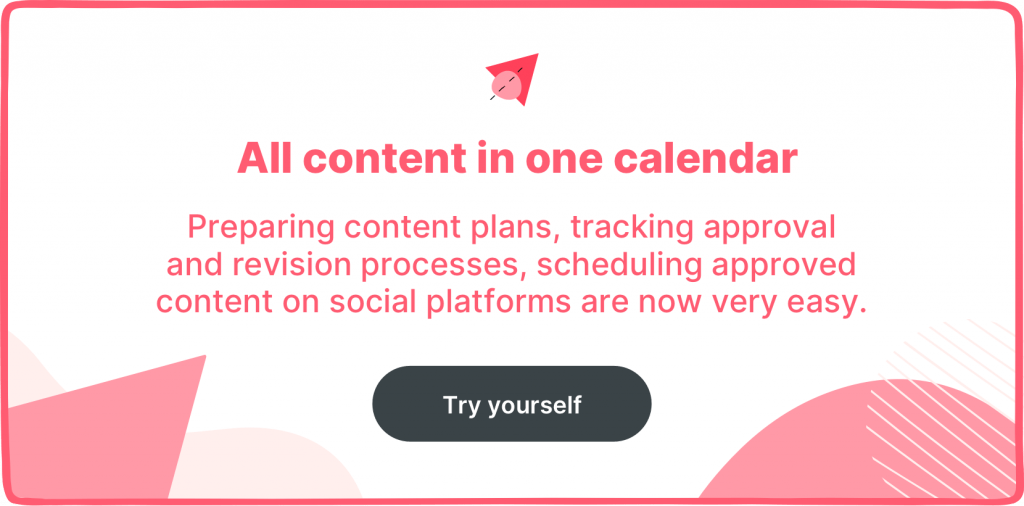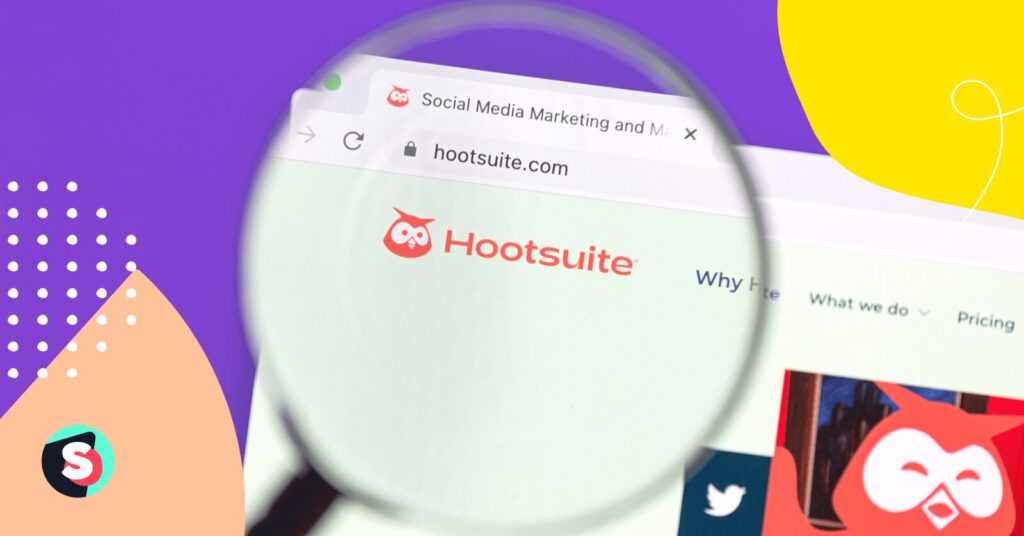It’s no secret that, as human beings, we’re inherently prone to nostalgia. Our fondest memories and feelings live on in our minds and, understandably, we periodically find ourselves longing for those moments. That’s why it’s no surprise that nostalgia is strongly rooted in the social media landscape we know today.
In many ways, nostalgia helps us establish feelings of social connectedness because it’s one of the core emotions we all share. Of course, social connection is also one of the core functions of social media.
An excellent tactic for tapping into these feelings of nostalgia on social media is through the use of the Throwback Thursday hashtag (#TBT). What is TBT? Where did it come from, and how can you use it?
In this guide, we answer all these questions and more. Here you’ll learn all about the TBT meaning, its history, why you should use it, and some uber-creative Throwback Thursday ideas you can integrate into your social media content plan.
What does TBT mean?
Let’s start with the basics, the first being the #TBT meaning. The acronym TBT stands for Throwback Thursday, with its hashtag being one of the most widely used in the history of social media. This social media phenomenon sees users sharing old content – be it images, videos, audio, or text excerpts – and using the hashtag #TBT to reminisce on that period of time.
Recalling past moments, particularly significant ones, helps evoke fellow users’ feelings of nostalgia. As a result, businesses are able to form emotional connections with their audiences, facilitating their transition into paying customers.
The history of Throwback Thursday
Where did Throwback Thursday come from? To take a look at its origins, we will (fittingly) need to throw ourselves back in time.
According to TIME, the first occurrence of Throwback Thursday can be traced back to a footwear blog called Nice Kicks. On it, then-21-year-old Bobby Sanders posted the image of Hot Wheels toy cars below with the first known instance of #ThrowbackThursday in 2011.
“I honestly don’t recall even taking it or it being a good photo,” said Sanders to TIME in 2015. “There was no real inspiration.”
Since then, Throwback Thursday (or #TBT) has skyrocketed to immense popularity. On Instagram alone, the hashtag now has over 580 million posts. It is used by everyday people as well as celebrities, prominent figures, and brands, acting as a social media unifier.
Additionally, although the hashtag rose to prominence on Instagram, it has since spilled over onto other platforms, such as Twitter, Facebook, and TikTok. For reference, #TBT has over 22.9 billion views on TikTok.
4 Reasons to consider using TBT
Given that it is one of the most popular hashtags the social media landscape has ever seen, the power of #TBT is undeniable. As a result, there are several reasons to integrate it into your social media strategy; these are our top four.
Spike engagement
Engagement is a key social media metric that can help you grow your online presence and attract new customers. Fortunately, using the TBT hashtag is an excellent tactic for increasing engagement.
For example, if your post is about a retro fashion trend that seems funny now, you can invite users to share their most questionable fashion decisions from the past in the comments.
Alternatively, you can share a throwback image or video and pose a question to your audience in the caption. Your followers can then engage with the content by answering the question in the comment section. Actor Martin Lawrence did this recently, sharing a clip of his performance in the 1999 film Blue Streak.
Tell your brand’s story
#TBT offers a unique opportunity for you to show where your brand came from and where it is now. Giving your audience insight into the history and evolution of your company is a fantastic way to foster brand awareness and stand out against competitors.
Pepsi has done a great job of using #TBT in this way in the past, including this engaging video of its logo throughout the years.
Foster brand loyalty
Going hand-in-hand with the previous point, the better a user understands your brand, its identity, and its history, the more likely it is that they’ll develop a sense of loyalty to it.
Speaking to Forbes, CMO Gily Netzer of Cymulate – Continuous Security Validation highlighted the importance of getting personal with your customers and allowing them to know you as a means of fostering brand loyalty.
To improve brand loyalty, get personal with your customers on a regular cadence to create a relationship that generates value for them, both in their hearts and minds,” she said. “People buy from people, and people like quality and value.
Build your following
Because the TBT hashtag is so popular, you’ll be entering an incredibly wide and diverse social media pool when you use it. With this comes a world of opportunities for you to find and attract new followers.
Hashtags help make your content more discoverable because they group your posts with all other posts that use that same hashtag. Plus, some users follow certain hashtags (just like they follow other users), which can help you access a plethora of new users you wouldn’t have accessed otherwise.
Throwback Thursday ideas and examples for social media
There are countless ways to use the TBT hashtag effectively. Below, we outline some of the simplest yet most creative TBT strategies you can use across your social media accounts.
Employee spotlights
To leverage #TBT, why not share some old photos of your executives and/or employees? This strategy is particularly effective because it helps put faces to the name of your brand, which helps massively in humanizing your company. This is especially important if your organization is led by particularly notable figures, as everyday consumers may feel quite distant from such individuals.
Customer interactions
If you have photos of staff engaging with customers, customer reviews, or organizational events that customers attended, sharing these can be a great way to leverage #TBT.
Not only does it allow you and your audience to look back fondly on past moments, but it shows that your customers are (and always have been) at the core of your business. As a result, customers will feel more inclined to trust that your brand genuinely cares about their needs and their loyalty.
Products
Another smart Throwback Thursday tactic is to share old images or videos of your products. This is a fantastic way to display how your products have evolved and how your business has adapted over time. This is effective firstly because it’s an engaging form of storytelling; you’re communicating years of ideas, effort, and progression in a simple photo or video. Plus, this practice shows your followers that your brand has experimentation, innovation, and creativity at its core.
Milestones
In your #TBT posts, why not reminisce on the important moments in your brand’s history? From your 100th sale to your business’ first birthday, there are several milestones that occur throughout a company’s growth – and celebrating these moments should be encouraged.
By showcasing your brand’s milestones on social media, you’ll help your audience understand how far it has come. Certain milestones can also help convey your brand’s credibility, which can thereby build trust among your followers.
Humor
If your social media profile is in need of some levity, then Throwback Thursday could be the answer. #TBT offers a fantastic opportunity to show your funny side (if that is in keeping with your brand identity). Take Ellen Degeneres as a perfect example; as a comedian, she and her brand are naturally known for her humor. As a result, incorporating this sense of humor across her social media profiles is a non-negotiable – and one she has done effortlessly many times.
TBT rules and checklist
Like most social media trends, there are some basic rules you’ll need to follow to effectively partake in Throwback Thursday. Here are some of the most relevant considerations to remember as you create your content.
Old
In order for your content to be a genuine “throwback”, it needs to be old. Authenticity is vital on social media, particularly with younger generations like Generation Z. If you’re caught using content that isn’t actually old but you’re trying to present it in that manner, your brand will appear disingenuous.
Original
Speaking of authenticity, the content that you post for Throwback Thursday has to be your own. Using another user’s content (without explicit permission) is never acceptable, and Throwback Thursday is no exception. Ensure you exclusively use content that belongs to your organization for optimal results.
Timeliness
Scheduling is important when it comes to using #TBT effectively. If you are going to partake in Throwback Thursday, you must share your content on a Thursday otherwise, the hashtag won’t make sense. One way to get around this is by using some of the #TBT alternatives, which we explore in the next section.
Hashtags
Of course, to properly participate in the trend, you’ll need to use the relevant hashtags. Whether you use #TBT, #ThrowbackThursday, or any of its variations, this is an integral step in ensuring that your content is discoverable.
Worth checking 👉 How to use hashtags on Facebook and do they really work?
Related Article: Debunking 6 Instagram hashtags myths social media marketers follow
A clear objective
When creating your TBT content, ask yourself what you hope to achieve in posting it. Are you hoping to make people laugh? Are you encouraging them to visit your website to learn more about your products? Do you want to shine a light on the excellent work of your employees? When you clearly outline the goal(s) for your content, you’ll be better able to track metrics to measure its level of success.
TBT Checklist
Want a simple, go-to checklist you can use when creating #TBT posts? We’ve got you covered. Use this handy checklist and ensure your content ticks all the boxes before posting.
- Is my content from the past?
- Is my content original and relevant in the current landscape?
- Is my content engaging?
- Have I used #tbt as well as any other pertinent hashtags?
- Have I picked the optimal medium for my messaging? (video, image, etc.)
- Have I picked the best platform(s) for my content? (Instagram, TikTok, Twitter, etc.)
- Does my post have a clear objective?
Variations of the TBT to share on social media
As we mentioned previously, there are several alternatives you can use in place of Throwback Thursday, including #MondayMemories, #TakeMeBackTuesday, #WayBackWednesday, #FlashbackFriday, and #OnThisDay.
On certain platforms, there is also an extensive range of TBT variations, such as #tbtchallenge, and others that include emojis, such as #tbt❤️and #tbt💕. On TikTok, the latter two hashtags have 42.6 million views and 236.5K views, respectively.
What to avoid when using #tbt
Now that you know what to do to make the most of #TBT, let’s take a look at some of the practices you’ll want to sidestep.
Repetitive content
Even though it’s old, your content should be fresh on your feed. Avoid using the same tactics and media over and over again, particularly if you plan to make use of #TBT repeatedly.
Socially insensitive content
While you want to showcase old content, you should refrain from posting anything overly outdated – particularly from a social justice standpoint. Doing so will ensure that you don’t marginalize or offend anybody with your content.
Negative memories
In general, it’s a good idea to keep your posts light and positive. There is no use in rehashing the negative occurrences of the past, whether it was a historical event or a PR blunder your company experienced.
Selfishness
Don’t make the content all about the company; keep the audience and their needs at the forefront of the post (this includes both its content and its format).
Irrelevance
Again, relevance is key. Before posting anything related to the #TBT trend, be sure that your post is both entertaining and relevant to your customers’ needs.
Conclusion
Despite rising to prevalence more than a decade ago, Throwback Thursday is still an ever-relevant hashtag to incorporate into your social media strategy. By familiarizing yourself with the TBT meaning, effective strategies for using it, and which practices to avoid, you can use this trend to uplevel your social media presence and achieve your marketing objectives.




